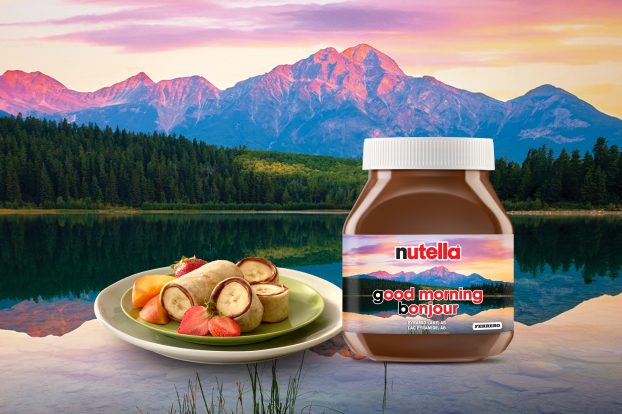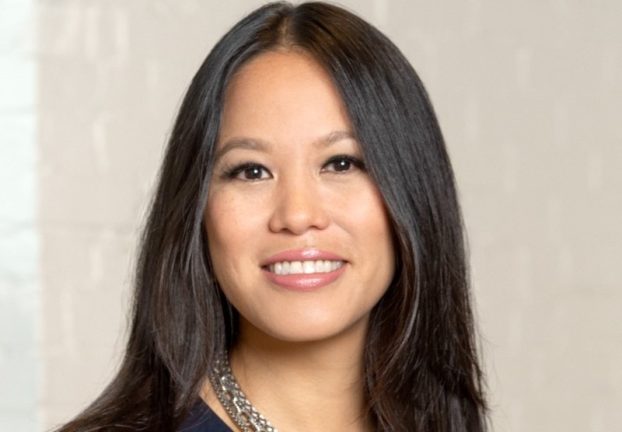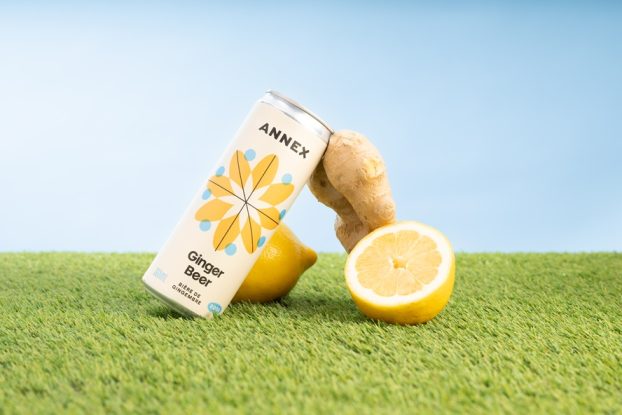It’s 3 p.m. on Christmas Eve, 2008. A woman in the GTA is making Christmas dinner when her cooktop stops working. She calls the manufacturer, Miele Canada, but is told that no technicians are available. So she tracks down the home number of the company’s president, Jan Heck, and asks him if there’s anything he can do. Heck calls the warehouse to locate a new cooktop, and has it delivered and installed in time for her dinner.
That story illustrates the advantages of the new business model launched in September by the Canadian subsidiary of the German appliance maker, which has been operating here since 1988. It’s called the Miele Chartered Agent (MCA) system, and it turns the company from a manufacturer into something of a retailer as well. Customers still buy its refrigerators, stoves, laundry machines, dishwashers, coffee makers and vacuums at stores like The Brick, now known as authorized chartered agents, but Miele handles the delivery, installation and service. It’s a system designed not only to improve the efficiency of the process but also to establish a closer relationship with the consumer. ‘It’s revolutionary,’ says Heck, who joined Miele Canada 10 years ago after working in food processing for other German companies in Canada. ‘Because you’re dealing directly with the manufacturer, there’s no wholesaler, retailer or distributor involved. So it’s quality control, not just from a product point of view but all the way to making sure the customer is satisfied. And if something goes wrong, we control that process too, so the customer doesn’t get the runaround.’
‘And knowing the customer is a huge benefit in this industry, and a unique one,’ adds Kelly Lam, Miele Canada’s director of marketing, who has been with the company for just over a year after 10 years with BMW Group Canada.
The MCA system is also a boon for the retailer/agents, says Geoffrey Roche, CCO of Toronto-based Lowe Roche, Miele Canada’s new AOR (Miele did their advertising in-house before hiring the agency last June): ‘The smart ones are realizing the advantages of not having 60 dishwashers that they own in their warehouse. Miele is going to turn this industry upside down.’
In Europe, where it has been operating for 110 years, Miele is a household name. But in Canada it’s seen as the maker of niche products for the ultra-rich (prices range from $700 to $1,200 for vacuum cleaners up to $5,250 to $9,990 for fridges and freezers). Miele Canada is countering that by introducing more affordable products, and it’s reaching out to Canadian consumers to educate them about the brand.
A crucial part of the plan is attracting consumers to Miele Canada HQ, which opened off Highway 400 in Vaughan, Ont., in 2006, and will soon hang out a ‘Miele Gallery open to the public’ shingle. The building houses a call centre where attendants deal with customers seven days a week, a public showroom with working kitchens, laundry stations and a mini café. ‘It’s like a cross between the most beautiful hardware store I’ve ever been in and Disneyland,’ says Roche.
There – as well as in galleries in Toronto’s St. Lawrence Market and Yorkville districts and in Montreal, Vancouver and soon Calgary – the company hosts wine tastings, art shows and demo nights to showcase its products and introduce new ones, like the chocolate-brown laundry machines launching this month. And Lam’s 13-person marketing team includes two home economists to provide customer assistance on the phone and in person.
At Miele.ca, you can inspect appliances and buy accessories for them. Or you can go to the new ‘shop-in-shop’ outlets – mini Miele showrooms set up in stores like The Bay which display the products with soft lighting and eye-catching design elements.
Miele’s advertising has traditionally stressed high quality and smart design, but the new business model calls for an expanded strategy with more mainstream advertising. So far, Lowe Roche’s initiatives have included a fall campaign promoting the MCA launch with print ads in major dailies. Marketing spend has increased to support the new initiatives.
Miele also has sponsorship deals involving tennis and alpine skiing events like the Miele Junior Race League. Then there’s its sponsorship of the Toronto-based Charles MacPherson Academy for Butlers and Household Managers – a niche market to be sure, but one that makes perfect sense for a manufacturer of high-end appliances.
Strategy sat down with Jan Heck and Kelly Lam at company HQ to discuss how they’re reinventing their brand – and the industry.
How did the MCA system come about?
Jan Heck: It was inaugurated 15 years ago in Australia. A number of smaller subsidiaries have adopted it, but Miele Canada is the biggest and most well-established subsidiary to have made the conversion mid-stream. The core change is that we converted our dealers to agents, meaning that Miele holds the inventory, owns the display stock and does the transaction with the consumer and the fulfillment. It’s a unique business model in the retail environment.
And a great way to differentiate yourselves from the competition.
Heck: It’s a huge advantage. This model is designed to tell the consumer that they’re buying direct from the manufacturer. We are a family company, and there is a Mr. Miele. The company is still 100% owned by two families, and we want to make sure our brand is protected. We have very good agents, but the only way for us to control the process is if we do it ourselves.
How do you reach out to your customers?
Kelly Lam: The majority of communication is through the telephone, although we do use demo nights where we invite them back in, and we have our home economists there to help. That personal experience is another thing we utilize to communicate with the consumer.
Heck: We are building a database, and at our orientations and demo nights we communicate new product introductions and other services. CRM, that’s what it’s about. Before, it was not possible because we were a typical wholesaler. So that’s one advantage to opening the communication lines to the end consumer.
Lam: We mail out notices for events, and also communicate through the agents. On our website we have the Care Collection, our detergents and dishpads that consumers purchase directly from us online. That’s another way we keep in touch with them.
How do you combat the perception that Miele’s products are priced out of reach for many Canadians?
Lam: We are broadening our customer base by bringing in a wider range of products. So we’re becoming less of a niche brand, and will have a product for almost everybody.
Heck: We like to compare ourselves with the car companies. You can buy a $200,000 BMW, but you can also buy a 3 Series for $35,000, which is an accessible product for a middle-class Canadian. It’s the same with our lineup. We have dishwashers starting at $1,299, but you can also buy a Miele dishwasher for $2,500. And this is something relatively new. We had some product gaps which we have now filled, so you can furnish your kitchen entirely with Miele products. We have various price points, but all premium, and the same quality applies to all of them.
How challenging is it to sell high-end appliances in a recession?
Heck: It’s probably easier. Consumers want to make sure that if they invest in a product, it’s the right product, one that offers longevity, quality, features and service. Where is it manufactured? Who is doing the service? Who underwrites the extended warranty? In our case, it’s us. They’re taking more time to make the right decision. So a premium brand, if it has the right assortment and the right price points, can actually prevail in a difficult economic environment.
What new products are you introducing?
Heck: We just created a complete new generation of dishwashers. That’s one of our core products here in Canada. We’re starting to widen the spectrum in other categories, but this new dishwasher launch is very exciting for us. We’re also launching new cooking products at the end of this quarter, and there will be a new line of upright canister vacuum cleaners this year.
Innovation is very important for us. Miele is not a company that has grown through acquisitions; we’ve predominantly grown through product innovations and new product introductions.
What was the thinking behind the coloured washing machines?
Heck: Every manufacturer is offering different colours. This is Miele’s first coloured laundry machine anywhere, so if a Canadian customer buys that chocolate-brown laundry system, they will be the first in the world. Miele has never sold any other colour than white, and we selected Canada for our first coloured entry, so we are very excited about that. It’s a limited edition – there will only be 1,000 pairs sold in Canada.
Is it a response to your competitors selling multi-coloured appliances?
Heck: For us, colour is not the main differentiator. The differentiator is the machine itself, the quality, the features, the service. It’s a trend we are following, but we focus on quality. At the end of the day it’s a washing machine, and the most important thing is how we care for your clothes.
There’s a wide spectrum of competitors out there, but we don’t focus on one. We have an internal policy that we focus on us. We want to be the best in everything we do, and whatever the competition is doing, we stay relatively neutral to that. It comes back to our slogan, ‘Immer Besser.’ It’s the company motto worldwide: ‘Always Better.’
Lam: The prime example is that this year is our 110th anniversary for laundry, and we are still the market leader. It’s our 80th anniversary for dishwashers, and we’re still setting the benchmark.
How have you adapted your marketing to reflect the new model?
Lam: The strategy has changed quite a bit, because in a lot of ways we’re now a retailer as much as a manufacturer. Previously we had a lot of lifestyle brand advertising, and we’ve moved to a more retail-oriented approach because we have to think like a retailer now, and our strategy has reflected that.
What’s your strategy with the sports sponsorships?
Lam: We believe in supporting grassroots development. The League Challenge with Tennis Canada is about developing young amateur athletes, and the ski sponsorships are no different. That was the philosophy. And we felt it was a strong target group for us. It’s not a typical sponsorship where it’s just exposure; it’s about developing up-and-coming athletes.
How did you get involved with butler training?
Lam: The Charles MacPherson Academy is the first butler academy in North America. They contacted us last year, asking if we were interested in a sponsorship involving our rotary irons [which cost $2,500 and are operated with a foot pedal]. A household manager generally has an operating budget of $1.4 million to run a household, and they make decisions on appliances and products. It makes sense for us, and it’s very much in line with our message that we want to get across.
Has your media mix changed as well?
Lam: We work closely with our agents and invest in vehicles that work for them. When we launched the new business model in September, we didn’t do TV, we mainly did a mix of radio and print. In the fourth quarter of last year we moved to outdoor as a unique opportunity, and the billboards were an experiment that worked well. We’re looking at different things. We need to differentiate ourselves at the point of sale, so we’re launching a new initiative to launch our shop-in-shop concept. It’s like a store within a store.
Heck: Some other companies are doing a good job of this, like Sony with its Sony galleries at stores. We are not copying that, but we want to be a freestanding individual brand outlet in a store. We have two right now in Mississauga and one in Vancouver, and we are planning to open about 25 this year.
Lam: It’s a huge investment, and one we feel is really important because we need to differentiate ourselves, and point of sale plays a key role in our overall strategy.
How important is design?
Heck: Very important. The design community, including interior designers and architects, is very involved in setting up our kitchens. Good design is crucial for the success of our brand. And we’re coming out with a new product called Clean Steel, as part of our new cooking line. It’s stainless steel that doesn’t show fingerprints.
What about design of the shop-in-shops?
Lam: As much as we can communicate with advertising and set an expectation, we need to make sure that once you walk into a store, that expectation is met. With these shop-in-shop outlets, we are involved in the flooring, the lighting, everything. It’s like you’re walking into a different world.
What’s your online strategy?
Lam: Right now the only product you can buy on the website is the Care Collection. But the web has changed a lot for us. Prior to September, Miele.ca was very much a manufacturer’s website. Today, it’s very different, because as a retailer it becomes a huge piece of the shopping process for us.
We know that Canadian consumers pre-shop online. They do their homework. So everything we put up on the website now is geared toward making sure that they have all the information they need and they can go to our agent with that decision made. Like everybody else, we used to have traditional printed brochures, but because online pre-shopping is so important, we’re moving toward e-brochures now.
What about buying appliances online?
Heck: It’s an emotional brand, and I believe that people want to see and feel the products. It’s the same thing with a car. Would you buy a car online? I would want to look at it and test drive it before I buy. Other stuff, books and CDs, I can see that. And consumables. We’ve seen a steady increase in our Care Collection business, which is only available online. But a major appliance? No, you want to see it.
How will you tell them about the showroom?
Lam: We will be revamping the demo nights and using that word of mouth, as well as marketing through event planning channels. And now that we know who our customers are, the communication becomes easier. We have them in a database, so it’s easy to have contact.
What’s the response been to the MCA system?
Heck: It’s been very positive. The fact that there’s someone who actually picks up the phone and they’re here in Canada…it’s not like other situations, where you have to be referred to the manufacturer or a third-party maintenance or service company and they don’t have the part and you get the runaround. There’s the big difference. But it’s a big responsibility. We cannot pass the buck. If we don’t place or ship the order properly, if we don’t show up on time, whatever can go wrong, we have to take full responsibility. Because the transaction is between you and us. That’s the fundamental business change, and it’s absolutely unique. People like that because we’re accountable.
How have the retailers responded to it?
Heck: This industry has at times been very stagnant, and when we approached our existing channels there was a lot of skepticism. But we’ve proven that it can work, and we are getting more positive feedback from the trade, which is encouraging, because nine months ago the reaction was, ‘You will never pull this off.’ Now it’s, ‘I can’t believe this works.’
This was the biggest transition in the history of our company in Canada, so it was a major accomplishment. And to top it off, we just came second in the Top 50 Best Small and Medium Employers in Canada, according to Queen’s School of Business. So our morale is very high. We had to sell the business model not just externally but internally as well. And the people who work for us believe this is the right model for Miele to grow.
Lam: It’s a great thing, but it means all of us in this building knowing that we have a responsibility to the consumer.
And that includes the CEO being available on Christmas Eve?
Heck: That’s the perfect story. My wife called to tell me this lady had called me at home. I called her, and we were able to have one of our technicians work overtime. We went to our warehouse, and because we didn’t want to take a chance and guess what could be wrong, we just grabbed a brand new cooktop. We went to her house, we exchanged it and she was able to cook her Christmas dinner.
That was only possible because it was our service technician and our warehouse operated by our people. It gives us shorter communication lines, shorter reaction times and more control. But it’s also costly. It’s a big infrastructure, but we’re investing in the brand. And I’m sure this lady told the story to numerous friends and family members – and that word of mouth is the most valuable advertising you can have.























